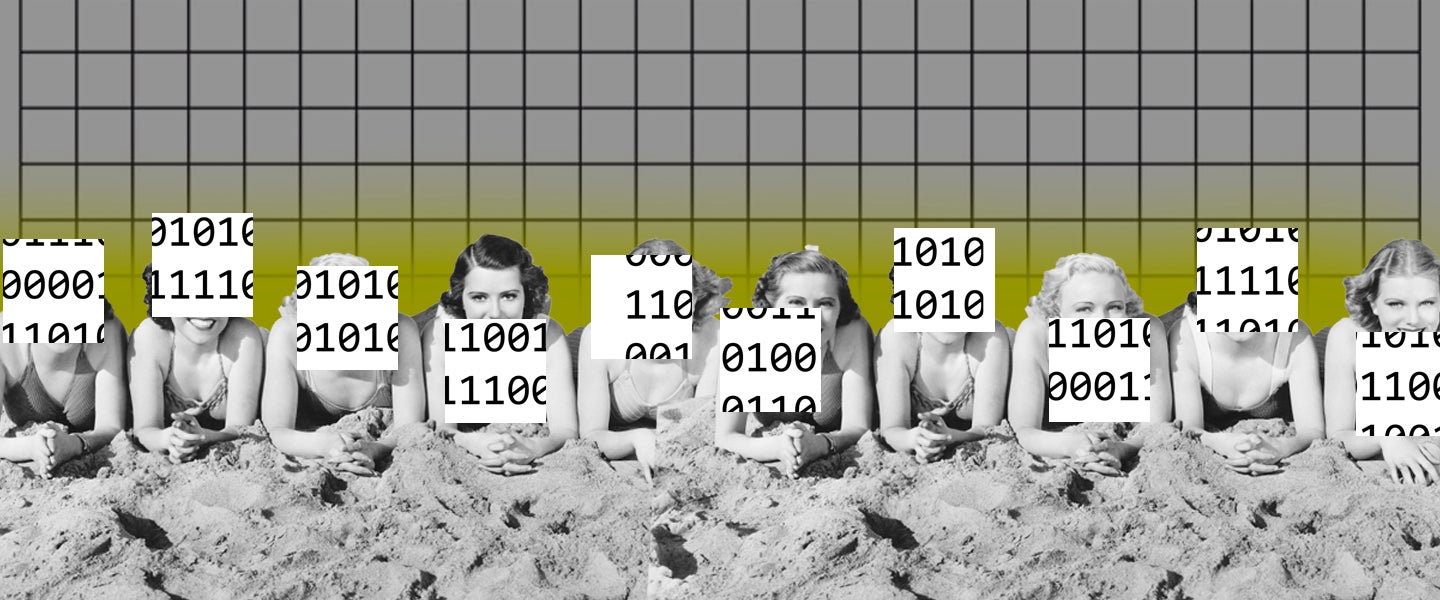If you added up all the hours you’ve spent gauging the attractiveness of everyone in your life, you’d have a mountain of time on your hands. Thoughts on who’s hot or not have the tendency to intrude without warning, despite whatever is on your mind. A nice face can rapidly absorb one’s full attention. We may not like that living in a society means involuntary participation in a matrix of aesthetic cross-appraisal, but it would be naive to pretend we’re not hard-wired this way. Unfortunately, the species depends on it!
So when I read about the high school girls in Maryland who are fighting to hold male classmates responsible for a list that ranked them by appearance, I had a couple of reactions. The first, of course, was good for those girls. They shouldn’t have to turn the other cheek when it comes out that guys are grossly objectifying them in some asinine document that no doubt resembles a Dungeons and Dragons character sheet. I also believe, however, that we’re not going to convince pubescent lads to stop being horny anytime soon — and so they need better ways to process that burgeoning lust.
Their biggest problem, apart from the false and harmful notion that women must be engaged in some kind of looks-based competition, striving not just to be hot on their own terms but the hottest of their cohort, is quantifying attractiveness on a 10-point scale. I mean, these dopes were using decimals. Is this fucking Pitchfork? What the fuck is the difference between a 7.1 and a 7.2, Ethan?? (I’m positive one of them is named Ethan.) And are you willing to date a 6, though not a 5? This is a trash system for virgins. And while I’m sure the group could have concocted something this stupid on their own, it’s remarkably similar to the hierarchies on offer at toxic bro websites like the publication Total Frat Move and misogynist pick-up blog Return of Kings. The TFM scale is so absurd as to describe a 6 as “the hottest girl you’ve ever seen in real life,” while Victoria’s Secret models merit no more than an 8. Neckbeards are a tough crowd, y’all — they must’ve been spoiled by their hentai.
I repeat: There’s no purpose to this categorization besides pitting women against one another in the spurious, Darwinian model of sexual economics that incels hold dear. It doesn’t capture the reality of dating and hooking up, which comes down to a single question: Are you into the person or not?
Unenlightened men condemn this yes-or-no approach, sometimes called the Binary, as “reductionism at its worst,” since they’d rather nitpick every last inch of a woman’s body than consider the non-physical factors of normal human attraction, much less the possibility of an emotional connection. The Binary is a superior alternative because it does account for all that: It’s holistic rather than diagnostic. Instead of dinging someone for their flaws, you see the sum of their appeal. And unlike the 1–10 scale, with its implications of a beauty pageant staged under the straight male gaze, the Binary is accessible to all genders and orientations.
It’s not that we should go around mentally dividing the global population into “fuckable” and “unfuckable” camps. And you sure as hell shouldn’t be writing and publishing a public list of the people you think are and aren’t hot — what are you, Mark Zuckerberg? Nevertheless, we make such judgments privately each day and throughout our romantic careers; it’s only sensible to make them as ethically and intelligently as we can, and to avoid grading one another like pieces of meat.
Even a Tinder-style app, which seems to operate on the would-you-or-wouldn’t-you premise of the Binary, lets us lapse into superficial decisions, as it doesn’t give us enough information to form a sound analysis. You can’t have chemistry with someone’s selfie. A crush is built on intangibles, on the unexpected resonance. Maybe you love the way they laugh, or their hidden talents, or the mix of pheromones they give off. Photos don’t always do us justice.
The Binary, moreover, is a metric that recognizes the subjectivity of desire. It describes your feelings toward a person, not their hypothetical stats in a hell-sport version of the singles scene. You’re not forced to adopt a consensus standard of what counts as attractive, and you therefore have space to ponder the qualities you value in a partner. The Binary is flexible, too, because first impressions are sure to fade. One night in college, I found myself dazzled by a woman I hadn’t pursued before; the switch flipped when we danced together, and her exuberance lit me up, melting away my self-consciousness. Is that an effect that figures into numeric ratings? Would I have had this epiphany after saddling her with an average hotness score, deciding she wasn’t up to snuff? Doubtful on both counts. But the Binary adapts. It will correct for any mistake.
On the flip side, what are the implications of a “perfect 10” with an off-putting personality? I mean a knockout who turns heads on the street, and takes that as an excuse to behave cruelly, or selfishly. Rating obsessives don’t wade into these waters, apparently satisfied that women have nothing to offer besides their bodies, anyway — their key assumption is that the persona is irrelevant or somehow undifferentiated from a boring identity shared among all “females.” Well, that’s dumb. Reject it, and remember the expansive, open-ended Binary.
On top of everything else, the Binary admits to the essential mystery of human magnetism: It’s often difficult to say precisely why we click with that special someone, or why one thing turns us on while another turns us off. The Binary doesn’t demand these answers. Living by this precept, intuition is your guide.
You’ll know your match when you meet them — and that is all you need to know.

